
Roots
The strands we carry upon our heads hold more than mere biological composition; they are living archives, whispering stories of generations, charting the passage of time, and inscribing the wisdom of those who walked before us. To truly comprehend how historical styling implements connect to our contemporary textured hair regimens, we must first listen to the echoes from the source, seeking to understand the very fiber of textured hair from its earliest perceptions and scientific revelations, all viewed through the sacred lens of Heritage. This journey begins deep within the anatomy of a strand, tracing its ancestral blueprint.

Hair Anatomy and Its Ancestral Understanding
Textured hair, particularly that which coils and kinks, possesses a unique architecture. Its elliptical follicle shape, for instance, naturally encourages the characteristic curl, a spiraling journey from scalp to tip. The cuticle, the outermost protective layer, tends to be more open on highly textured strands, leading to a greater propensity for moisture loss compared to straighter hair types. Ancestral communities, long before microscopes or molecular diagrams, held an intuitive, observable comprehension of these qualities.
Their practices—the careful oiling, the consistent sectioning, the art of protective styles—were not arbitrary acts. They were precise, repeated responses to the hair’s fundamental requirements, born of centuries of observation and adaptation. Consider the act of twisting or braiding ❉ this compresses the cuticle, reducing environmental exposure and thereby mitigating moisture escape, a timeless answer to the hair’s intrinsic thirst.
The very language used to describe hair in various African societies reflects this deep, lived understanding. It often moves beyond simple curl patterns, embracing the hair’s behavior, its interaction with moisture, its strength, and its responsiveness to care. These descriptive frameworks, while not clinical, served as practical classification systems, guiding appropriate care and styling. Modern hair science, with its analytical tools, often validates what ancestral hands already knew through generations of practiced wisdom.

Early Tools and the Genesis of Care
From the dawn of documented civilization, people have fashioned tools for hair. For textured hair, these tools were designed with a keen understanding of its unique characteristics. Archaeological records from Kush and Kemet (modern-day Sudan and Egypt) reveal combs dating back over 5,500 years.
These implements, carved from wood, bone, and ivory, possessed wider teeth and a robust structure, perfectly suited for navigating coils without causing undue stress or breakage. They were not simply utilitarian items; they were adorned with symbols of status, tribal identity, and spiritual meaning, often found buried with their owners, a testament to the sacred place hair held in these ancient societies.
Ancestral hands understood hair’s unique structure, crafting tools and practices that intuitively supported its vitality.
The very process of styling with these tools often served as a communal ritual, deepening familial bonds and transmitting cultural knowledge. Mothers instructed daughters, and friends tended to one another’s crowns, sharing stories and solidifying social ties. This collective aspect of hair care, centered around tools shaped for specific hair needs, laid the foundation for regimens that persist in various forms today.

How Did Ancestral Classifications Inform Tool Development?
Pre-colonial African societies developed complex hair classification systems that extended beyond simple aesthetic descriptions. Hair could convey age, marital status, social rank, religious belief, and even tribal affiliation. These distinctions naturally informed the tools and techniques employed.
For instance, specific braiding patterns, each with its own cultural meaning, necessitated specialized combs for parting and sectioning, or needles for intricate weaving. The tools became extensions of the cultural language inscribed on the head.
Consider the Wooden Picks used for lifting and aerating tight coils, or the finely crafted bone combs for detailed parting. These were not generic items; they were purpose-built, evolving alongside the stylistic and social dictates of communities. The deep understanding of hair’s variations within a community meant that tools were often tailored to specific hair types or the requirements of particular styles, establishing a sophisticated relationship between hair biology, cultural expression, and the implements used in daily care.

Hair Cycles and Environmental Wisdom
The rhythms of hair growth and shedding were intimately observed in ancestral communities. Traditional practices often aligned with natural cycles, incorporating specific herbs, oils, and earth-derived compounds at different times. The use of certain Plant-Based Emollients for sealing moisture, or Natural Cleansers to refresh the scalp, were informed by an awareness of how climate, diet, and seasonal changes influenced hair health.
The tools, too, adapted to these cycles; softer brushes for delicate new growth, or robust combs for detangling after extended protective styles. This deep, empirical knowledge formed the basis of care regimens that sought to work with the hair’s natural inclinations, rather than against them.

Ritual
The act of tending to textured hair transcends mere grooming; it is a ritual, a profound conversation between past and present, a living record of resilience and ingenuity. Historical styling implements are not simply museum pieces; they are the genesis points for techniques that continue to define contemporary textured hair regimens, bridging millennia through shared purpose and cultural memory. This exploration uncovers how these tools served as canvases for self-expression, communication, and even survival, deeply embedding themselves within the Heritage of Black and mixed-race communities.

Protective Styling Origins and Evolution
The origins of protective styles, such as braids, twists, and coils, extend back thousands of years in Africa. These styles were not just decorative; they were essential for hair health, protecting strands from environmental elements and minimizing tangling. Ancient depictions show the intricate artistry and diverse purposes of these styles. For example, some patterns communicated marital status, age, tribal affiliation, or social standing.
One compelling historical instance underscores the profound functional and symbolic role of these practices. During the transatlantic slave trade, when African individuals were forcibly taken from their homelands and often stripped of their cultural identity, including having their heads shaved, the art of hair braiding became a clandestine tool of resistance. Enslaved women, particularly in regions like Colombia, skillfully incorporated escape routes and maps into their cornrow patterns, sometimes concealing seeds or small amounts of gold within the braids to aid in their survival after escape. (Afriklens, 2024; Odele Beauty, 2021) This powerful act reveals how a styling technique, born from ancestral knowledge, transformed into a covert language of liberation, cementing its place in the Heritage of resistance.
Contemporary protective styling techniques echo these ancestral methods, using braiding and twisting to safeguard hair, minimize manipulation, and promote length retention. The continuity is unmistakable ❉ a modern individual opting for box braids or twists is, in a very real sense, honoring a practice that once guided journeys to freedom and preserved cultural identity under extreme duress.

What Ancient Tools Shaped Our Braiding Practices?
The earliest combs, such as the wide-toothed versions unearthed in ancient Kush and Kemet, were fundamental to creating the precise parts and sections required for elaborate braided styles. These implements, often crafted from wood or bone, were designed to navigate the dense, coily textures of African hair without causing undue damage. Their robust construction and wider spacing between teeth prevented snagging and breakage, a practical consideration that remains paramount in selecting modern detangling combs. The tradition of communal hair styling sessions, where tools were shared and techniques passed down, further solidified the connection between the instrument and the cultural practice.

The Thermal Transformation Tools
The story of heat styling tools provides a contrasting yet equally significant narrative in textured hair history. While natural styles and protective braiding were deeply rooted in African societies, the post-slavery era saw increased pressure to conform to Eurocentric beauty standards, which often favored straight hair. This societal demand led to the adaptation and popularization of tools designed for straightening.
The hot comb, a metal comb heated over a stove or fire, gained prominence in the late 19th and early 20th centuries. While its initial development for waving hair is attributed to a French hairdresser, Marcel Grateau, in the 1870s, it was trailblazers in the African American community like Annie Malone and her apprentice Madam C.J. Walker who refined and widely distributed versions of the hot comb with wider teeth, specifically tailored for textured hair. This tool offered a means to achieve a smoother hair texture, a response to prevailing beauty norms, though sometimes at the cost of hair health due to excessive heat.
From maps to identity markers, historical hair practices reveal a dynamic interplay of resilience and adaptation.
Today’s flat irons and heated styling brushes, while technologically advanced and offering better temperature control, stand as direct descendants of these early thermal tools. They represent a continued desire for styling versatility, yet contemporary regimens emphasize heat protection and responsible usage, a lesson learned from the historical challenges faced by those who sought to modify their natural texture.
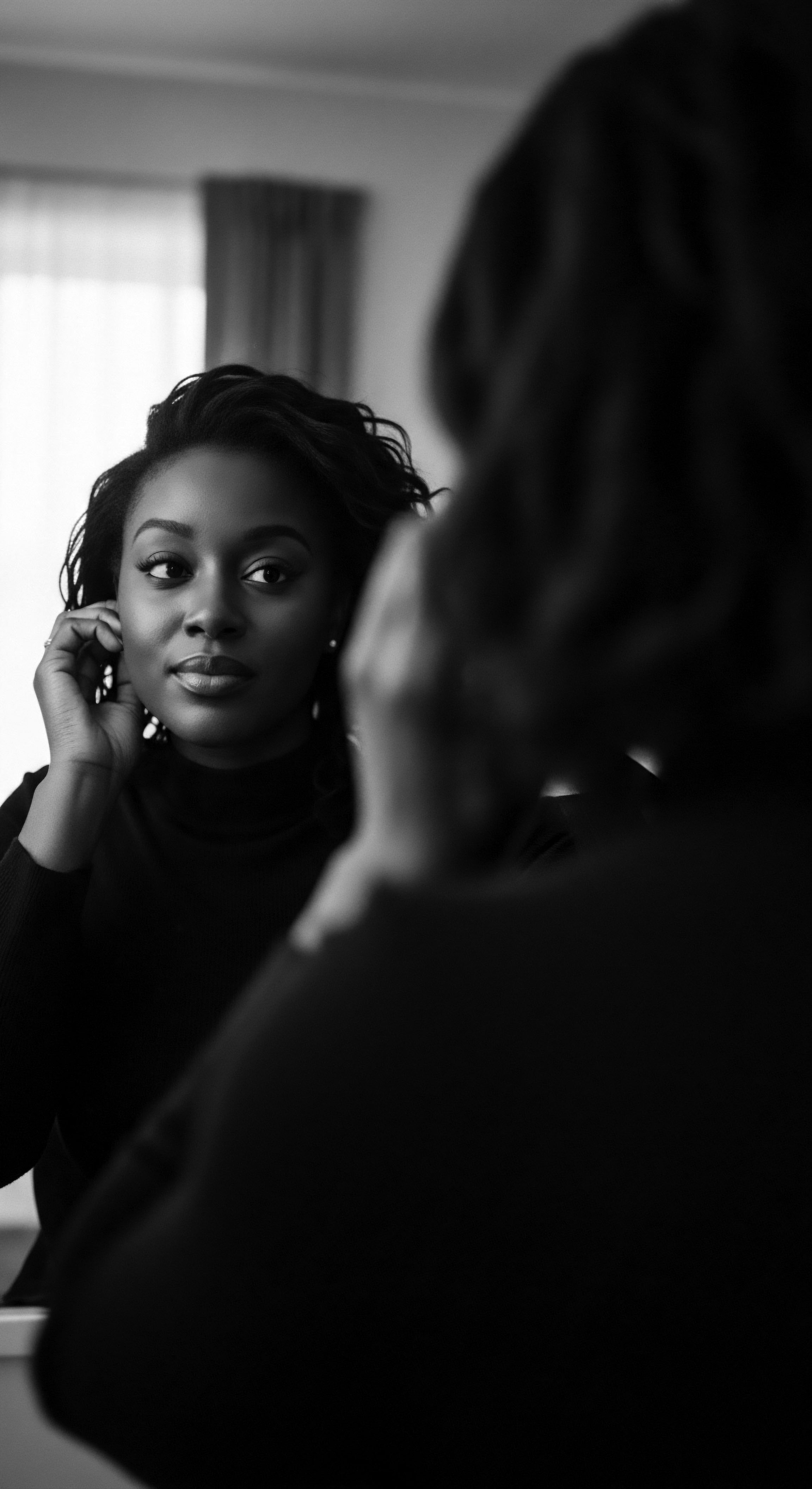
The Afro Pick’s Political Power
The afro pick, a comb with widely spaced, long teeth, holds a unique place in the history of textured hair tools. While variations of similar combs existed for millennia in Africa, the modern afro pick gained iconic status during the Civil Rights and Black Power movements of the 1960s and 1970s. It became a potent symbol of Black pride and identity, worn visibly in voluminous afros as a statement of self-acceptance and defiance against Eurocentric beauty norms. The imagery of the clenched black fist integrated into the handle of many afro picks solidified its status as a political emblem.
Today, the afro pick is a common detangling and styling tool, appreciated for its effectiveness in lifting and shaping coils without disrupting the natural curl pattern. Its usage connects contemporary wearers to a powerful legacy of resistance and celebration of natural hair.
| Historical Tool/Method Wide-Toothed Bone Combs (Kush, Kemet) |
| Purpose and Heritage Context Detangling, parting for braids, signifying social status. Essential for managing dense, coily hair without damage. |
| Contemporary Counterpart/Connection Modern wide-tooth combs and specialized detangling brushes. Used for gentle detangling on wet or dry hair. |
| Historical Tool/Method Braiding by Hand (Ancient Africa, Slavery Era) |
| Purpose and Heritage Context Protective styling, cultural communication, storytelling, camouflage for escape routes. |
| Contemporary Counterpart/Connection Contemporary braids, twists, and locs as protective styles and cultural statements. Techniques refined but principles remain. |
| Historical Tool/Method Hot Comb (19th-20th Century) |
| Purpose and Heritage Context Hair straightening to conform to Eurocentric beauty standards; a tool of economic independence for stylists. |
| Contemporary Counterpart/Connection Modern flat irons and straightening brushes. Used for thermal styling with emphasis on heat protection. |
| Historical Tool/Method Afro Pick (1960s onward) |
| Purpose and Heritage Context Lifting and shaping the Afro hairstyle; a symbol of Black pride and political resistance. |
| Contemporary Counterpart/Connection Everyday afro picks and hair lifts. Still used for volume and shaping, embodying cultural connection. |
| Historical Tool/Method These tools, from antiquity to modernity, reflect a continuous lineage of ingenuity in textured hair care, adapting to both biological needs and societal pressures. |
The art of styling textured hair has always been a conversation across time, where the implements of the past, whether simple combs or heated irons, laid the groundwork for the diverse expressions we witness today. Each tool, each technique, carries with it the spirit of those who first wielded it, an enduring testament to the cultural depth woven into every strand.

Relay
The contemporary textured hair regimen is a testament to an unbroken lineage, a sophisticated dialogue between ancestral wisdom and current scientific understanding. How historical styling tools connect to these daily acts of care and problem resolution is not merely a matter of technique; it reaches into the very philosophy of well-being and the reclamation of Heritage. This deep dive uncovers the profound resonance of ancient practices in our modern routines, revealing a continuous stream of knowledge passed from generation to generation.

Building Personalized Regimens Rooted in Ancestry
Today, the pursuit of a tailored textured hair regimen often champions natural ingredients and gentle practices. This aligns perfectly with ancestral approaches that emphasized scalp health, moisture retention, and minimal manipulation. In pre-colonial Africa, a variety of natural elements were used to nourish and safeguard hair.
For instance, shea butter, coconut oil, and aloe vera have been mainstays for centuries, recognized for their moisturizing and protective qualities. These practices were not just about aesthetics; they were integral to maintaining the hair’s vitality in diverse climates and lifestyles.
The continuity is striking. Modern formulations for textured hair often feature these same ancestral ingredients, scientifically validating their efficacy. The knowledge of their benefits, accumulated through centuries of empirical observation, now forms the bedrock of many clean beauty and wellness brands dedicated to textured hair. This deep connection affirms that holistic hair care is a reclaiming of knowledge, an affirmation of a living, evolving Heritage.

What Ancestral Wisdom Guides Modern Hair Moisture?
Ancestral communities understood the critical need for moisture for textured hair, which tends to be prone to dryness due to its coil structure and open cuticles. Their methods involved regular oiling and sealing, using ingredients like Shea Butter and Castor Oil. These practices served to lubricate the strands, prevent breakage, and lock in hydration. Today, these very ingredients remain staples in deep conditioners, leave-in treatments, and styling creams, echoing the wisdom that dry hair is vulnerable hair.
The consistent application of these emollients, often coupled with protective styles, formed a comprehensive moisture management system. This system, passed down through generations, underscores a central tenet of modern textured hair care ❉ hydration is paramount.
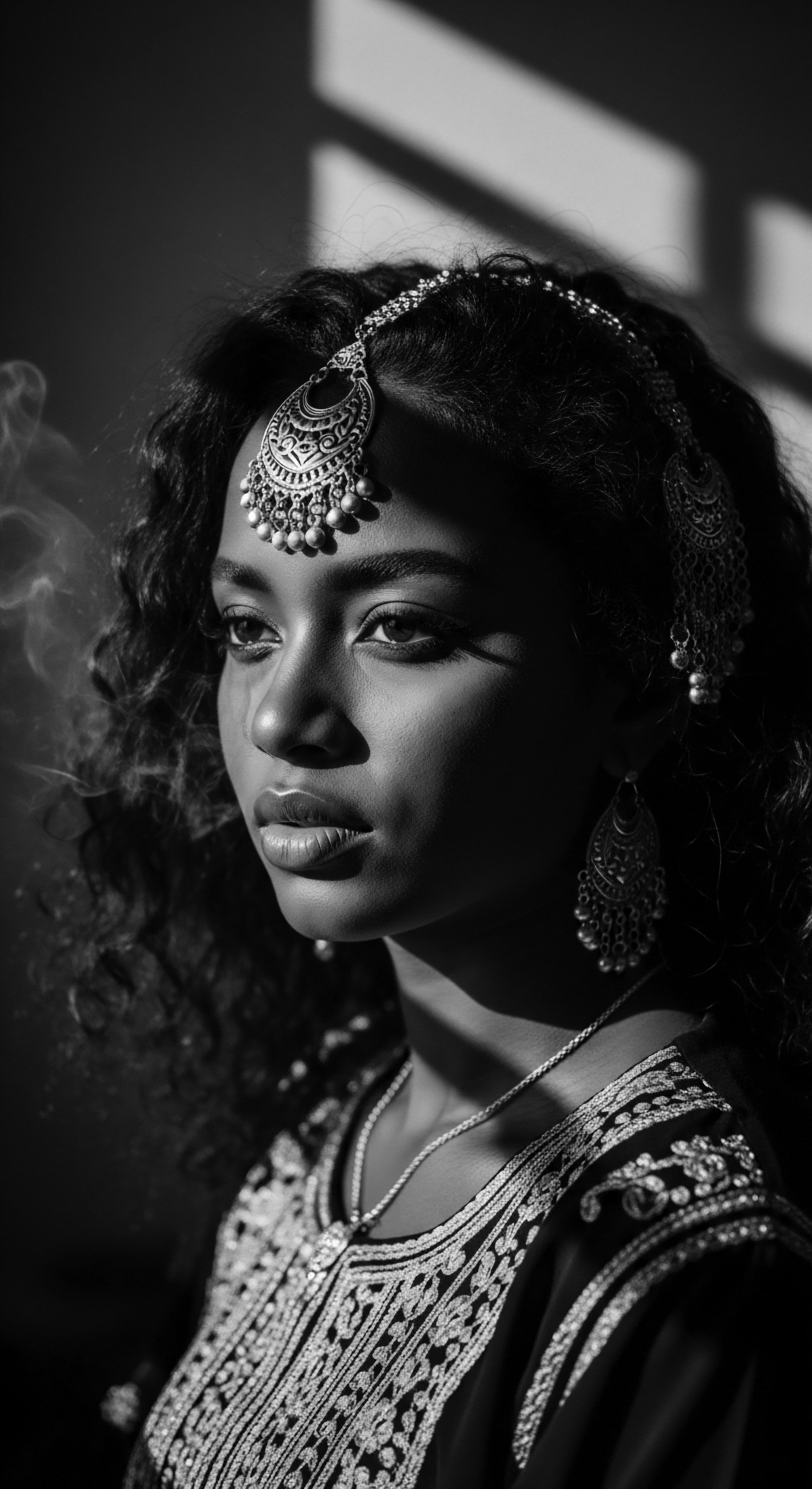
The Nighttime Sanctuary and Bonnet Wisdom
The practice of protecting hair at night is not a recent innovation. While the satin bonnet or silk pillowcase might seem contemporary, their purpose extends from a long lineage of hair preservation practices. Historically, head wraps and coverings served multiple purposes, including protection from the elements, spiritual significance, and maintaining styled hair. During slavery, while head coverings were often mandated as a means of control and to conceal unkempt hair, the enslaved also adapted these coverings to shield their tresses from harsh conditions and dirt encountered during labor.
The modern use of silk or satin bonnets and pillowcases directly reflects this ancestral understanding of friction reduction and moisture retention. These materials, with their smooth surfaces, minimize snagging and absorb less moisture from the hair, preserving hydration and preventing breakage that can occur during sleep. It is a simple yet profound act of self-care, linking current nighttime rituals to the resourceful adaptive practices of those who came before.
- Shea Butter ❉ A rich emollient, historically used across West Africa for its deep moisturizing and protective qualities for skin and hair.
- Black Castor Oil ❉ A traditional oil, particularly in Caribbean communities, valued for promoting scalp health and stimulating hair growth.
- Chebe Powder ❉ Originating from Chad, this blend of herbs is celebrated for strengthening hair, reducing breakage, and aiding in length retention.

Addressing Hair Concerns with Traditional Wisdom
Contemporary textured hair regimens frequently address challenges such as dryness, breakage, and tangles. These are not new concerns. Ancestral knowledge systems contained solutions for these issues, often relying on locally sourced botanicals and time-tested methods.
For example, the precise art of finger detangling, or using wide-toothed implements, was a direct response to the natural tendency of coily hair to intertwine. Herbal rinses and masques, prepared from plants with known conditioning or strengthening properties, acted as treatments for common hair ailments.
Modern problem-solving in textured hair care frequently integrates these traditional solutions with scientific backing. Products designed to strengthen fragile strands, improve elasticity, or soothe an irritated scalp often feature ingredients that have been part of ancestral hair care for generations. This convergence highlights a continuous thread of care, demonstrating that the well-being of textured hair has always been a priority, with adaptive wisdom guiding solutions.
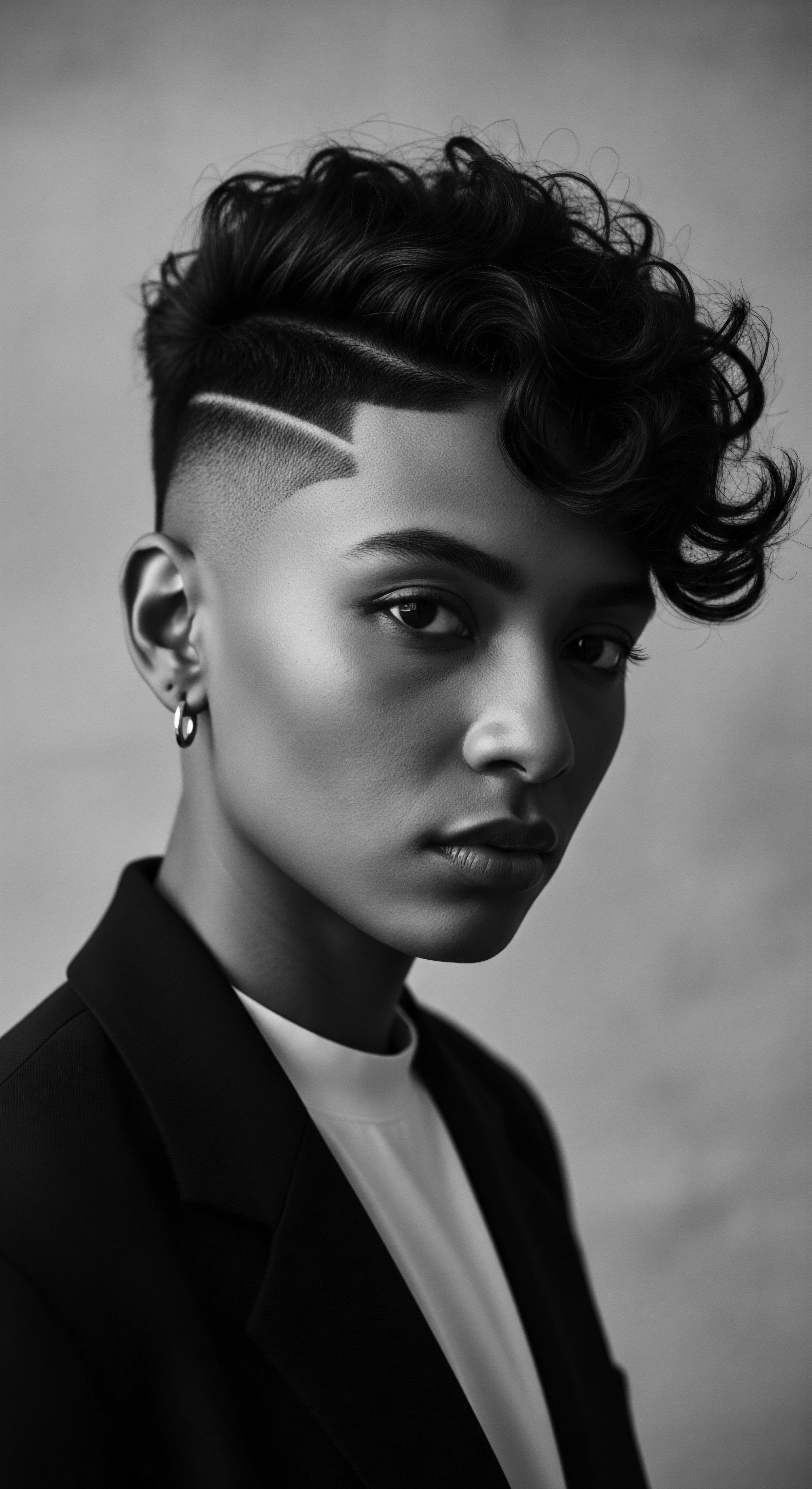
How Does Holistic Wellness Connect to Hair Health History?
In many ancestral cultures, hair care was never isolated from overall well-being. It was viewed as an extension of the body’s spiritual and physical state. Hair was often considered a conduit to the divine or a reflection of inner health. Practices that nourished the body internally through diet and mindfulness were understood to contribute to external radiance, including the health of hair.
Today, the movement towards holistic wellness within textured hair communities echoes this deeply ingrained philosophy. Emphasis is placed on nutrition, stress management, and mindful self-care as integral components of a complete hair regimen. This holistic approach recognizes that the condition of our hair is not solely a product of external treatments, but a reflection of our internal harmony, a concept understood and practiced by our ancestors for centuries. It is a powerful reminder that our connection to our hair is a deeply personal, cultural, and spiritual one, inextricably linked to our collective Heritage.

Relay
The contemporary textured hair regimen is a testament to an unbroken lineage, a sophisticated dialogue between ancestral wisdom and current scientific understanding. How historical styling tools connect to these daily acts of care and problem resolution is not merely a matter of technique; it reaches into the very philosophy of well-being and the reclamation of Heritage. This deep dive uncovers the profound resonance of ancient practices in our modern routines, revealing a continuous stream of knowledge passed from generation to generation.
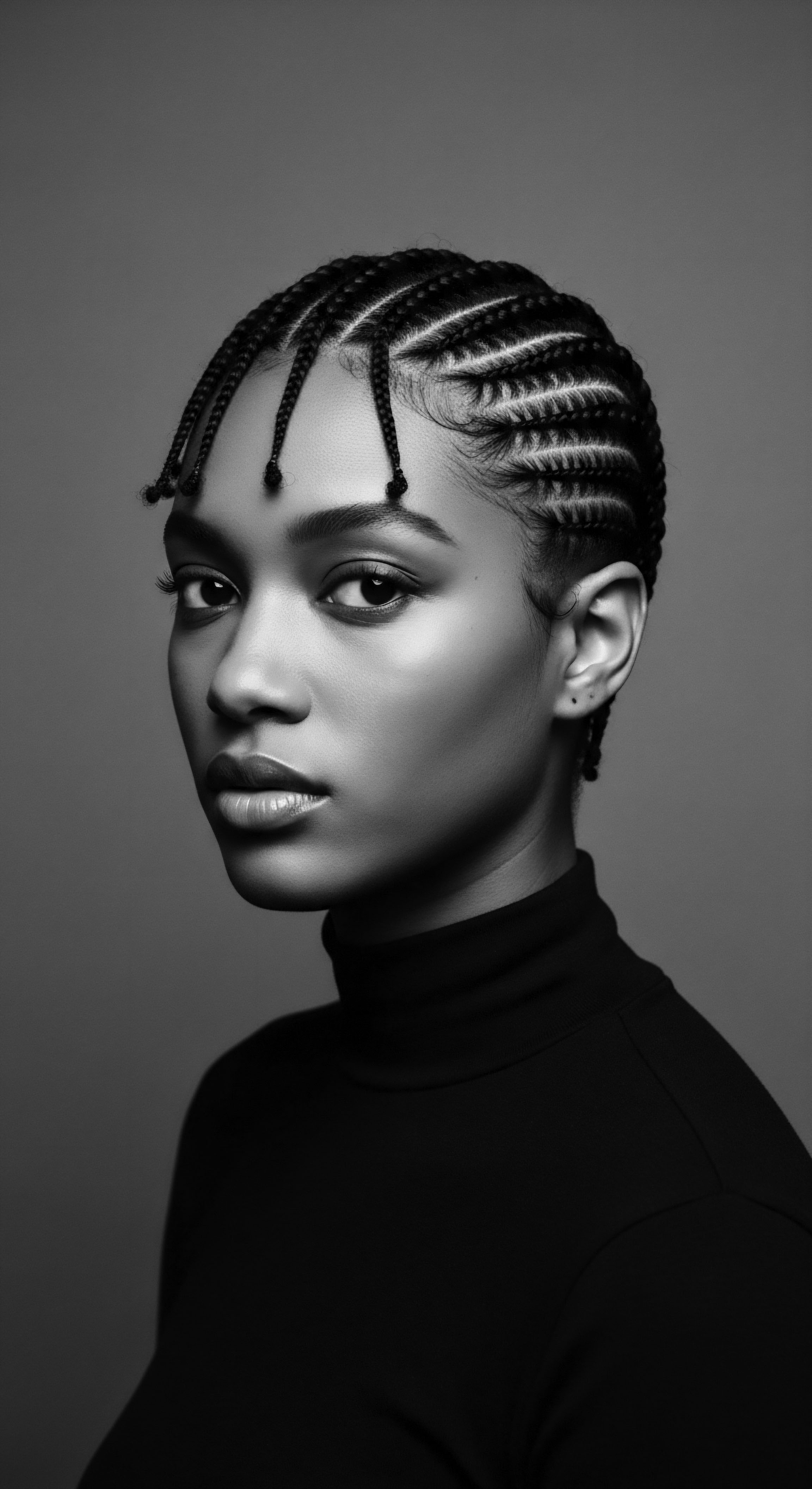
Building Personalized Regimens Rooted in Ancestry
Today, the pursuit of a tailored textured hair regimen often champions natural ingredients and gentle practices. This aligns perfectly with ancestral approaches that emphasized scalp health, moisture retention, and minimal manipulation. In pre-colonial Africa, a variety of natural elements were used to nourish and safeguard hair.
For instance, shea butter, coconut oil, and aloe vera have been mainstays for centuries, recognized for their moisturizing and protective qualities. These practices were not just about aesthetics; they were integral to maintaining the hair’s vitality in diverse climates and lifestyles.
The continuity is striking. Modern formulations for textured hair often feature these same ancestral ingredients, scientifically validating their efficacy. The knowledge of their benefits, accumulated through centuries of empirical observation, now forms the bedrock of many clean beauty and wellness brands dedicated to textured hair. This deep connection affirms that holistic hair care is a reclaiming of knowledge, an affirmation of a living, evolving Heritage.

What Ancestral Wisdom Guides Modern Hair Moisture?
Ancestral communities understood the critical need for moisture for textured hair, which tends to be prone to dryness due to its coil structure and open cuticles. Their methods involved regular oiling and sealing, using ingredients like Shea Butter and Castor Oil. These practices served to lubricate the strands, prevent breakage, and lock in hydration. Today, these very ingredients remain staples in deep conditioners, leave-in treatments, and styling creams, echoing the wisdom that dry hair is vulnerable hair.
The consistent application of these emollients, often coupled with protective styles, formed a comprehensive moisture management system. This system, passed down through generations, underscores a central tenet of modern textured hair care ❉ hydration is paramount.
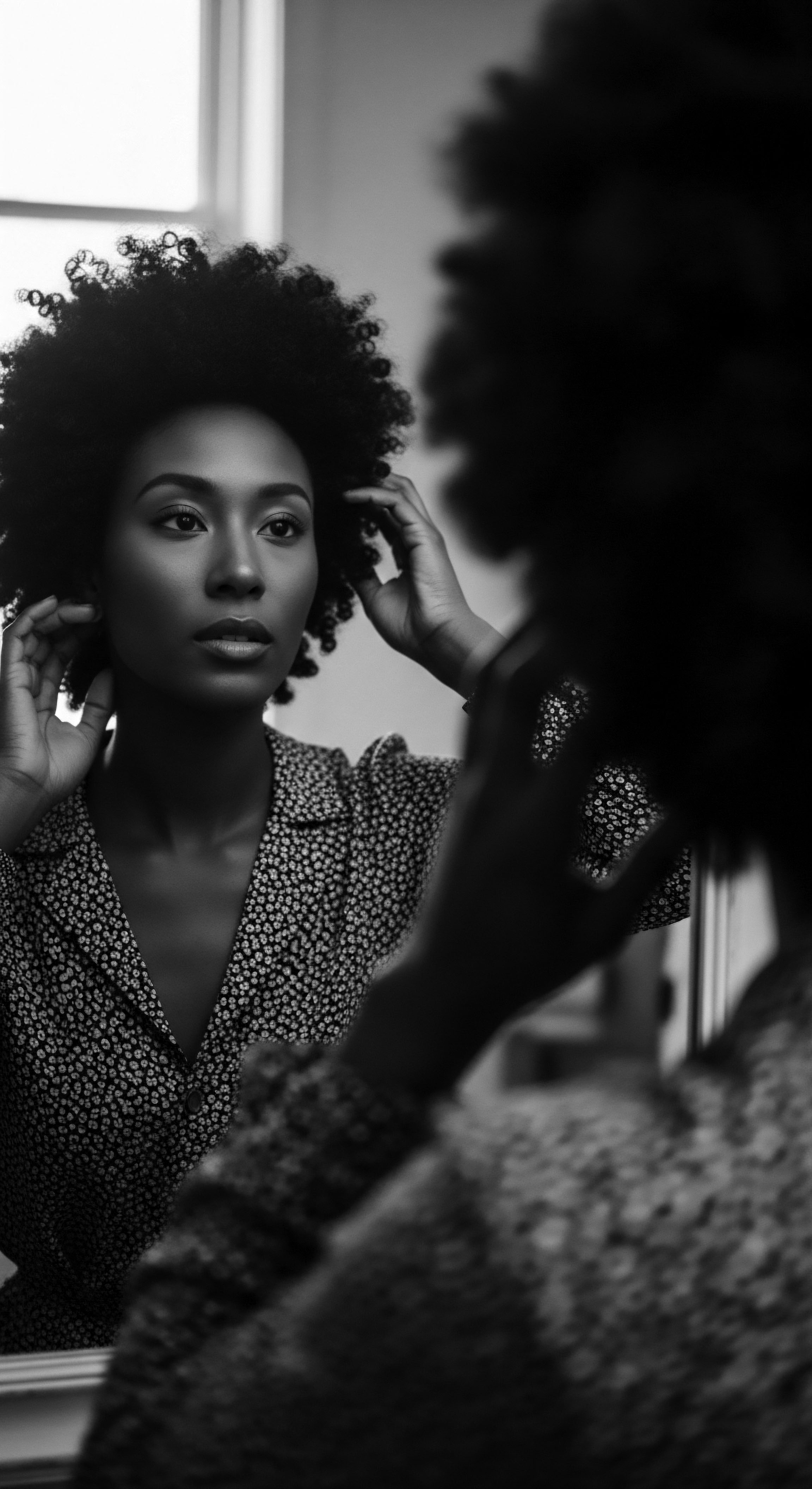
The Nighttime Sanctuary and Bonnet Wisdom
The practice of protecting hair at night is not a recent innovation. While the satin bonnet or silk pillowcase might seem contemporary, their purpose extends from a long lineage of hair preservation practices. Historically, head wraps and coverings served multiple purposes, including protection from the elements, spiritual significance, and maintaining styled hair. During slavery, while head coverings were often mandated as a means of control and to conceal unkempt hair, the enslaved also adapted these coverings to shield their tresses from harsh conditions and dirt encountered during labor.
The modern use of silk or satin bonnets and pillowcases directly reflects this ancestral understanding of friction reduction and moisture retention. These materials, with their smooth surfaces, minimize snagging and absorb less moisture from the hair, preserving hydration and preventing breakage that can occur during sleep. It is a simple yet profound act of self-care, linking current nighttime rituals to the resourceful adaptive practices of those who came before.
- Shea Butter ❉ A rich emollient, historically used across West Africa for its deep moisturizing and protective qualities for skin and hair.
- Black Castor Oil ❉ A traditional oil, particularly in Caribbean communities, valued for promoting scalp health and stimulating hair growth.
- Chebe Powder ❉ Originating from Chad, this blend of herbs is celebrated for strengthening hair, reducing breakage, and aiding in length retention.

Addressing Hair Concerns with Traditional Wisdom
Contemporary textured hair regimens frequently address challenges such as dryness, breakage, and tangles. These are not new concerns. Ancestral knowledge systems contained solutions for these issues, often relying on locally sourced botanicals and time-tested methods.
For example, the precise art of finger detangling, or using wide-toothed implements, was a direct response to the natural tendency of coily hair to intertwine. Herbal rinses and masques, prepared from plants with known conditioning or strengthening properties, acted as treatments for common hair ailments.
Modern problem-solving in textured hair care frequently integrates these traditional solutions with scientific backing. Products designed to strengthen fragile strands, improve elasticity, or soothe an irritated scalp often feature ingredients that have been part of ancestral hair care for generations. This convergence highlights a continuous thread of care, demonstrating that the well-being of textured hair has always been a priority, with adaptive wisdom guiding solutions.

How Does Holistic Wellness Connect to Hair Health History?
In many ancestral cultures, hair care was never isolated from overall well-being. It was viewed as an extension of the body’s spiritual and physical state. Hair was often considered a conduit to the divine or a reflection of inner health. Practices that nourished the body internally through diet and mindfulness were understood to contribute to external radiance, including the health of hair.
Today, the movement towards holistic wellness within textured hair communities echoes this deeply ingrained philosophy. Emphasis is placed on nutrition, stress management, and mindful self-care as integral components of a complete hair regimen. This holistic approach recognizes that the condition of our hair is not solely a product of external treatments, but a reflection of our internal harmony, a concept understood and practiced by our ancestors for centuries. It is a powerful reminder that our connection to our hair is a deeply personal, cultural, and spiritual one, inextricably linked to our collective Heritage.
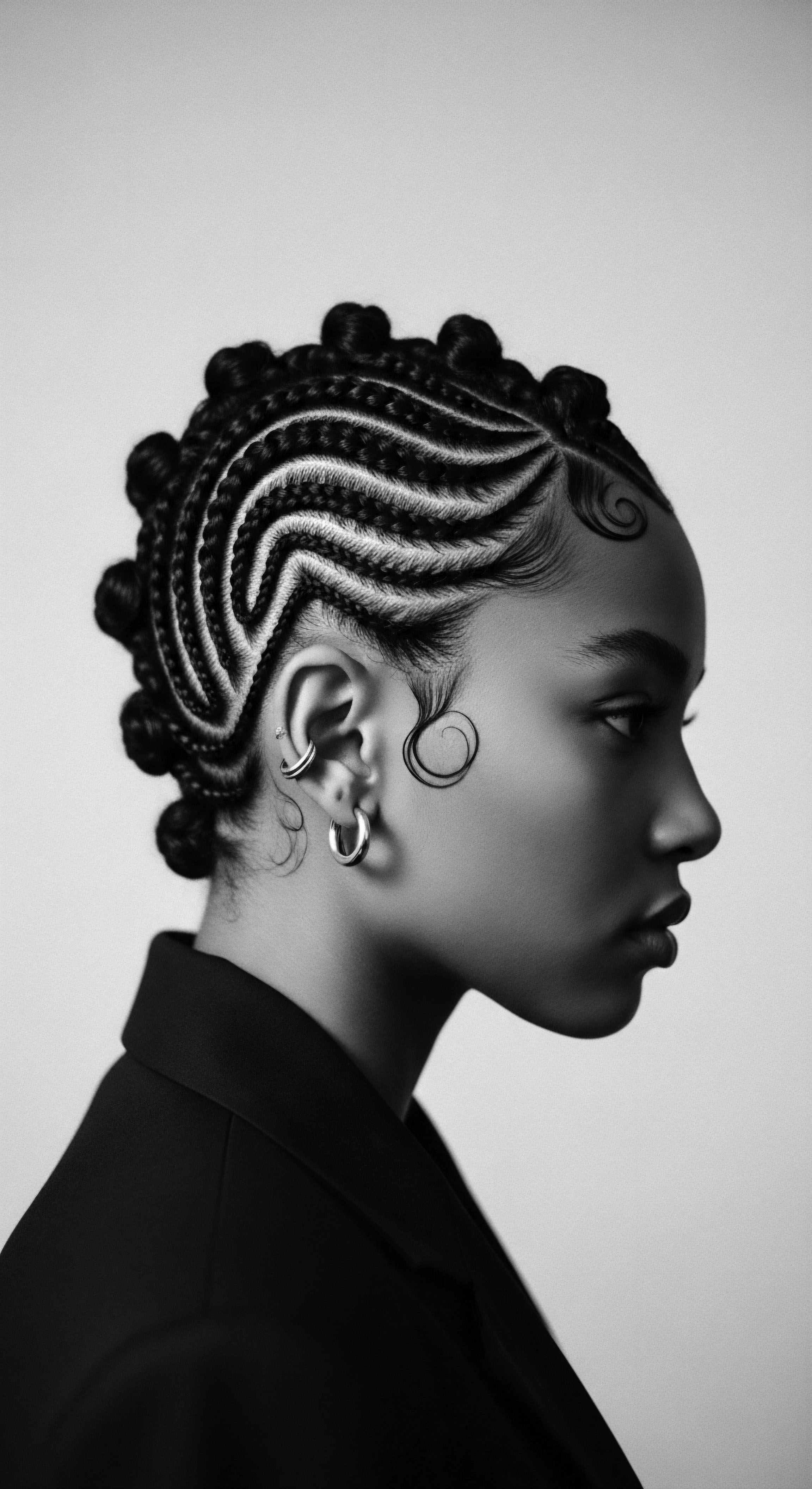
Reflection
The journey through the historical styling tools and their enduring presence in contemporary textured hair regimens is a testament to the resilient spirit of a people. Each comb, each braid, each ritual carries the whispers of ancestors, reminding us that the care of textured hair is more than a routine; it is a living, breathing archive of identity, resistance, and celebration. The ingenuity displayed in adapting tools and techniques across diverse circumstances speaks to a profound understanding of hair’s inherent nature and its cultural significance.
As we nurture our coils and kinks today, we are not merely applying products or shaping styles; we are participating in a timeless conversation. We honor the wisdom of those who transformed the simple act of grooming into an affirmation of self, a silent language of defiance, and a cherished community practice. This profound connection to our hair’s deep past allows us to see our strands as more than just a physical attribute; they are a sacred inheritance, a vibrant testament to the enduring power of Heritage, continuously informing and inspiring our path forward. The soul of a strand truly lives in this unbroken lineage.
References
- Byrd, A. & Tharps, L. L. (2014). Hair Story ❉ Untangling the Roots of Black Hair in America. St. Martin’s Griffin.
- Dabiri, E. (2019). Twisted ❉ The Tangled History of Black Hair Culture. Harper Perennial.
- Sherrow, V. (2006). Encyclopedia of Hair ❉ A Cultural History. Greenwood Press.
- Rosado, S. (2003). Hair and Identity ❉ A Sociocultural Analysis of Black Hair in the Diaspora. (Unpublished doctoral dissertation).
- Tulloch, C. (2004). Black Style. Victoria and Albert Museum.
